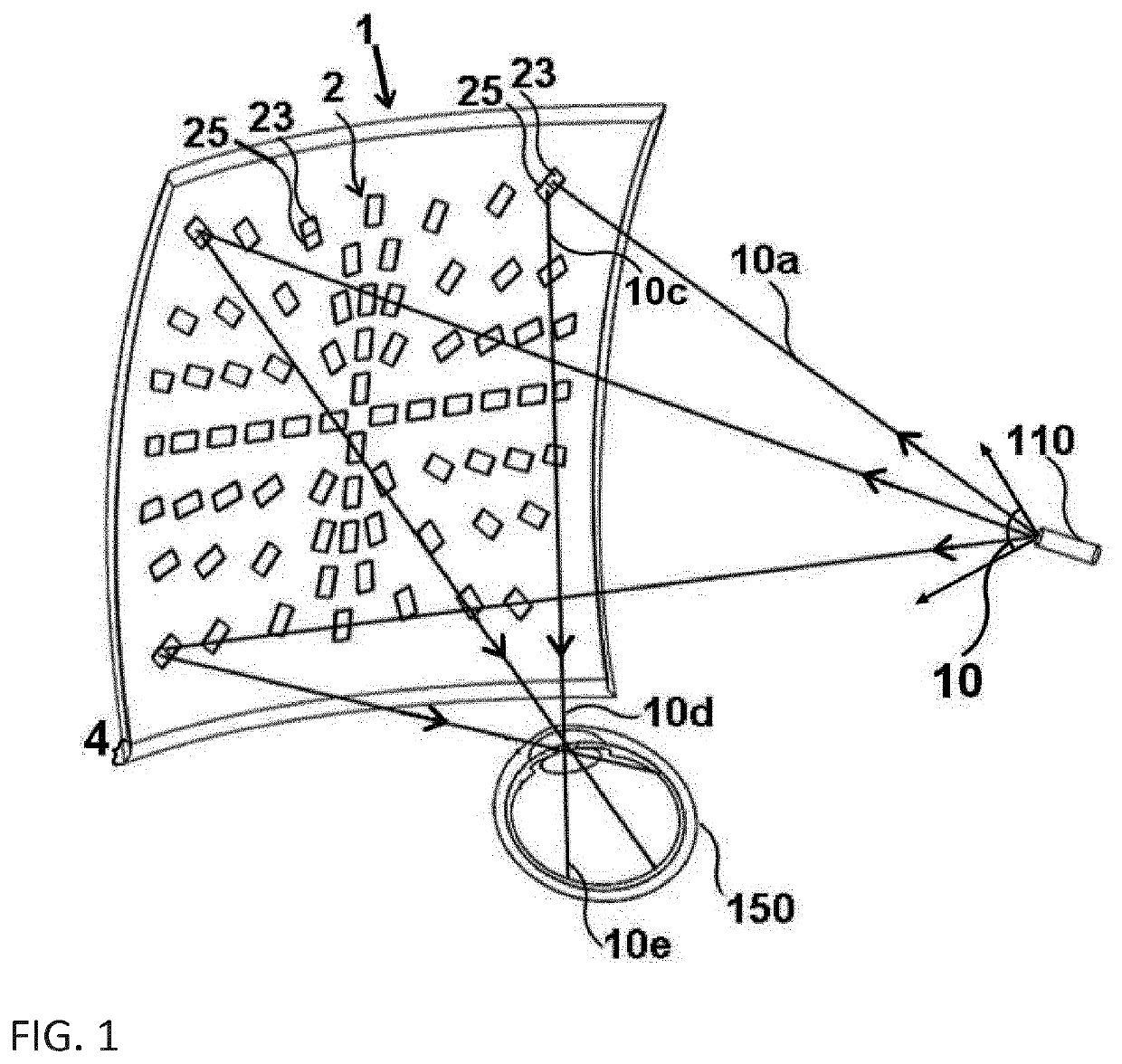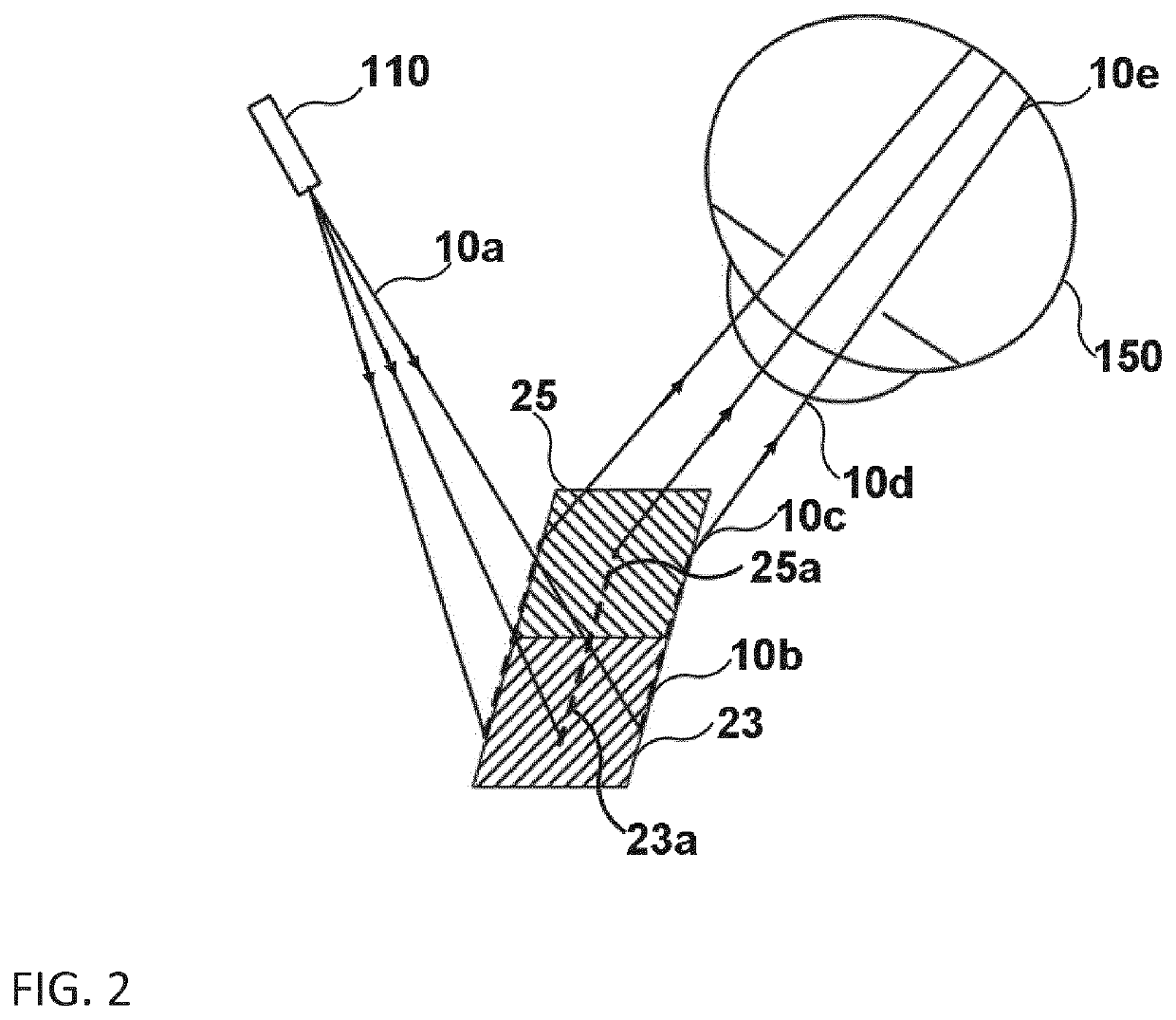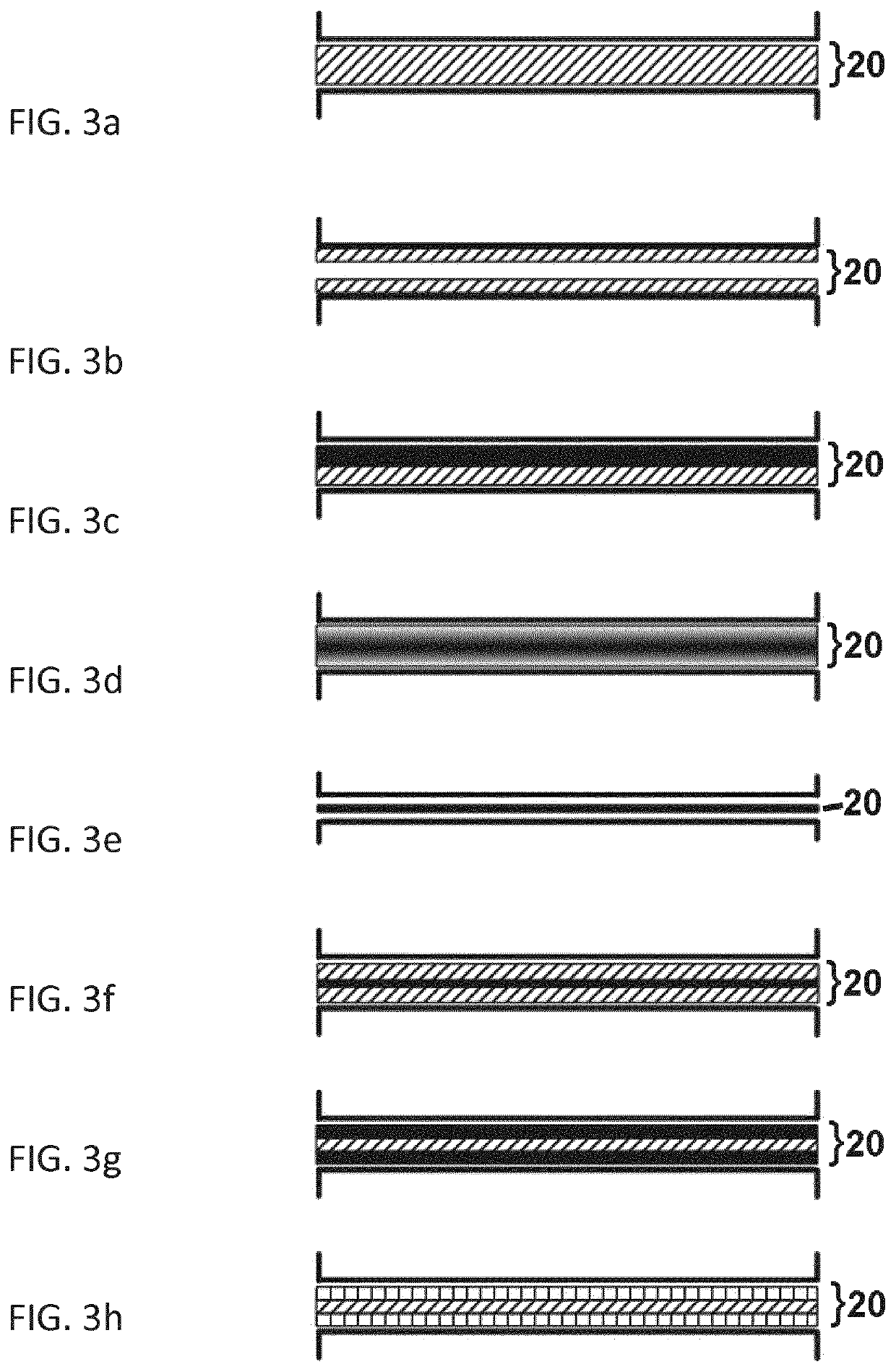Optical combiner and applications thereof
a combiner and optical technology, applied in the field of optics, can solve the problems of limited interaction length of the waves interacting with said substances, destructive and constructive interference of forward and backward propagating waves, and the inability to apply methods in the case of deep grating grooves, etc., to achieve shorten the spectral width of the outcoupled light, increase or decrease the effect of outcoupling efficiency and limited optical perturbations
- Summary
- Abstract
- Description
- Claims
- Application Information
AI Technical Summary
Benefits of technology
Problems solved by technology
Method used
Image
Examples
Embodiment Construction
[0076]The following detailed description is directed to certain specific embodiments of the invention. However, the invention can be embodied in a multitude of different ways. In this description, reference is made to the drawings wherein like parts are designated with like numerals throughout. As will be apparent from the following description, the embodiments of the optical combiner may be implemented in any device that comprises said optical combiner. More specifically the optical combiner may be implemented in a near-to-eye display apparatus.
[0077]The near-to-the-eye display apparatus 100 of the invention, also defined as display, comprises at least said optical combiner 1 and a light source, also defined as image projector, microdisplay or light emitter 110, as illustrated in FIG. 23. The light emitter 110 emits a light beam 10 in the direction of the optical combiner 1. The optical combiner 1 has a front side 1a situated to the side of a scene, defined as front side, and a bac...
PUM
| Property | Measurement | Unit |
|---|---|---|
| wavelength | aaaaa | aaaaa |
| wavelength | aaaaa | aaaaa |
| thickness | aaaaa | aaaaa |
Abstract
Description
Claims
Application Information
 Login to View More
Login to View More - R&D
- Intellectual Property
- Life Sciences
- Materials
- Tech Scout
- Unparalleled Data Quality
- Higher Quality Content
- 60% Fewer Hallucinations
Browse by: Latest US Patents, China's latest patents, Technical Efficacy Thesaurus, Application Domain, Technology Topic, Popular Technical Reports.
© 2025 PatSnap. All rights reserved.Legal|Privacy policy|Modern Slavery Act Transparency Statement|Sitemap|About US| Contact US: help@patsnap.com



